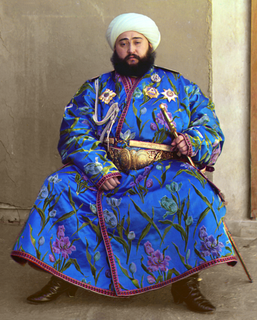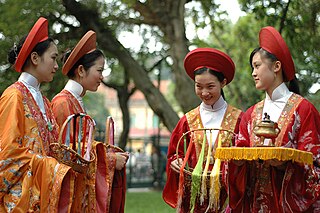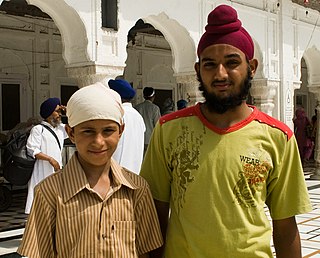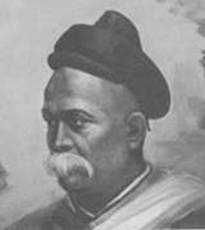 W
WA turban is a type of headwear based on cloth winding. Featuring many variations, it is worn as customary headwear by people of various cultures. Communities with prominent turban-wearing traditions can be found in the Indian subcontinent, Southeast Asia, the Arabian Peninsula, the Middle East, the Balkans, the Caucasus, Central Asia, North Africa, West Africa, East Africa, and amongst some Turkic peoples in Russia as well as Ashkenazi Jews.
 W
WAlasho is an indigenous Hausa long turban, worn across the head and neck. It is near identical in length, colour and dimensions to that of the Tuareg tagelmust, but is wrapped differently to the Tuareg method, leaving the sides of the head and some of the lower neck free. A similar style turban is worn by Songhai men, known as 'fatalaa' in Zarma.
 W
WA dastār which derives from dast-e-yār or "the hand of God", is an item of headwear associated with Sikhism, and is an important part of Sikh culture. The word is loaned from Persian through Punjabi. In Persian, the word dastār can refer to any kind of turban and replaced the original word for turban, dolband (دلبند), from which the English word is derived.
 W
WDastar bunga, or "towering fortress", is a style of turban used by a specific sect within the Sikhs, the Akali Nihangs. As an essential part of their faith the warriors used the turban as a store for their expansive range of weapons.
 W
WA draped turban or turban hat is a millinery design in which fabric is draped to create headwear closely moulded to the head. Sometimes it may be stiffened or padded, although simpler versions may just comprise wound fabric that is knotted or stitched. It may include a peak, feather or other details to add height. It generally covers most or all of the hair.
 W
WA head tie is a women's cloth head scarf that is commonly worn in many parts of West Africa and Southern Africa. Head ties are also commonly worn by Married Jewish Women as symbol of marriage. The head tie is used as an ornamental head covering or fashion accessory, or for functionality in different settings. Its use or meaning can vary depending on the country and/or religion of those who wear it. Among Jewish women, the Biblical source for covering hair comes from the Torah in the book of Bamidbar Parshas Nasso which contains the source for the obligation of a married woman to cover her hair. An eesha sotah is a woman whose husband suspects her of having acted immorally. The Torah commands the Kohein to take various steps to demonstrate that the sotah has deviated from the modest and loyal path of most married Jewish women. Among the procedures, the pasuk clearly states: “ufora es rosh haisha…” and he shall uncover the hair of the head of the woman(5:18). One can only uncover something that has previously been covered; in this case the Torah is referring to the married woman’s hair.
 W
WThe Hejazi turban, also spelled Hijazi turban, is a type of the turban headdress native to the region of Hejaz in modern-day western Saudi Arabia.
 W
WKhăn vấn, khăn đóng or khăn xếp, is a kind of turban worn by Vietnamese people which had been popular since ancient times. The word vấn means coil around. The word khăn means cloth, towel or scarf.
 W
WMandla v Dowell-Lee [1982] UKHL 7 is a United Kingdom law case on racial discrimination. It held that Sikhs are to be considered an ethnic group for the purposes of the Race Relations Act 1976.
 W
WPagri, sometimes also transliterated as pagari, is the term for turban used in the Indian subcontinent. It specifically refers to a headdress that is worn by men and women, which needs to be manually tied. Other names include sapho.
 W
WPeshawari turban, also Peshawari patke or Peshawari lungee, is the traditional turban worn in Peshawar and its surrounding regions.
 W
WThe priestly mitre or turban was the head covering worn by the High Priest of Israel when he served in the Tabernacle and the Temple in Jerusalem.
 W
WThe Puneri Pagadi is a distinctive style of turban, which is considered as a symbol of pride and honor in the city of Pune. It was introduced two centuries ago. Though it is a symbol of honour, the use of the pagadi has changed over the years and now it is also used on traditional days in colleges. To preserve the identity of the pagadi, there were demands from the locals to grant it a Geographical Indication (GI) status. Their demand was fulfilled and the pagadi became an intellectual property on 4 September 2009.
 W
WRasam Pagri is a social ceremony, prevalent in Punjab and Rajasthanis in the Indian subcontinent. The ceremony is conducted upon the death of the eldest male member in a family, in which the eldest surviving male member of the family ties a turban (pagri) on his head in the presence of the extended family or clan. According to the Hindu traditions, the ceremony is usually performed by the father of the wife of the eldest, surviving male member. The ceremony usually takes place on the fourth day from the day of funeral rites, or on the thirteenth day, Tehravin. The turban signifies honor of the family, and the ceremony signifies the transition of responsibility for the protection and welfare of the family from the deceased to the surviving oldest male member.
 W
WThe sarpech, also known as an aigrette, is a turban ornament that was worn by significant Hindu, Sikh and Muslim princes. Sar means "head" or "front" and pech means "screw", giving the word "sarpech" the literal meaning "that which is screwed onto the front ". The sarpech was also worn in Persia, where it was known as jikka or jiqa, meaning "crest" or "tuft", and in Turkey, where it was known as the sorguch, a name considered a corrupt form of the Persian word sarpush.
 W
WSudra is a piece of cloth usually worn as a scarf or headdress as part of ancient Jewish tradition. Over time it held many different functions and today is sometimes understood to be of great cultural or religious significance to Jews. It is mentioned in various ancient and medieval Aramaic and Greek texts written in or about the Near East among them the Gospel of Luke from around 80–110 CE, the Peshitta from the 1st-2nd century, the Targum Neofiti from around the 1st-4th century, the Babylonian Talmud which was completed around 500 CE – this text makes numerous mentions of the sudra and is an important source for its role in Jewish life at the time – and the Targum Pseudo-Jonathan dated between the 4th century and the 14th century.